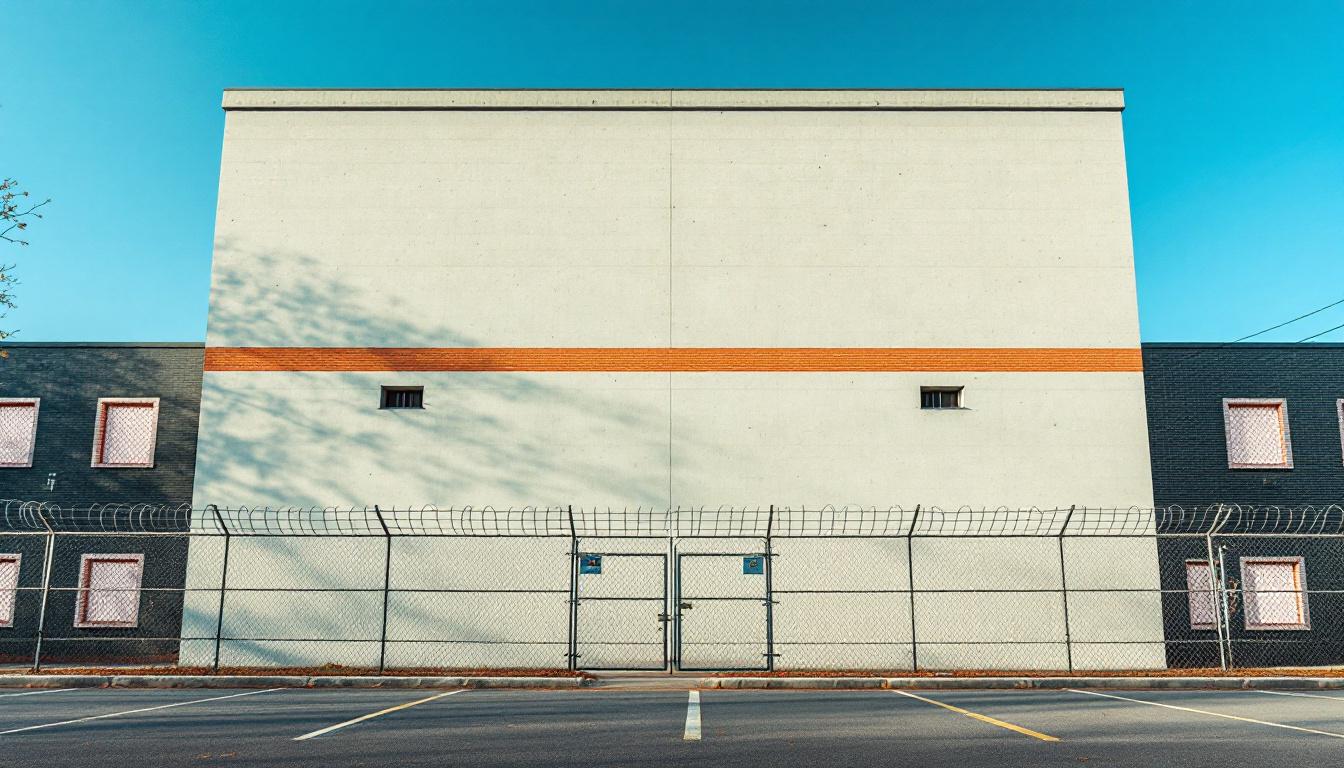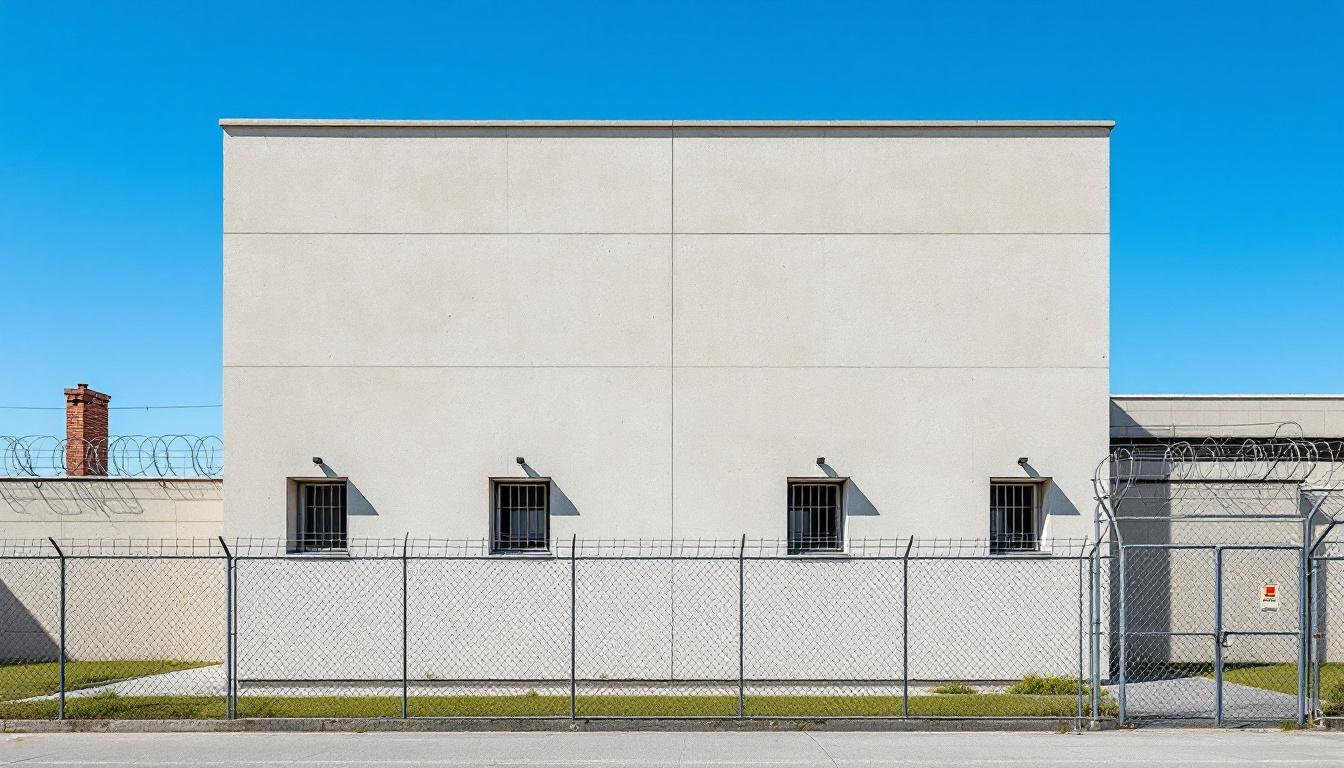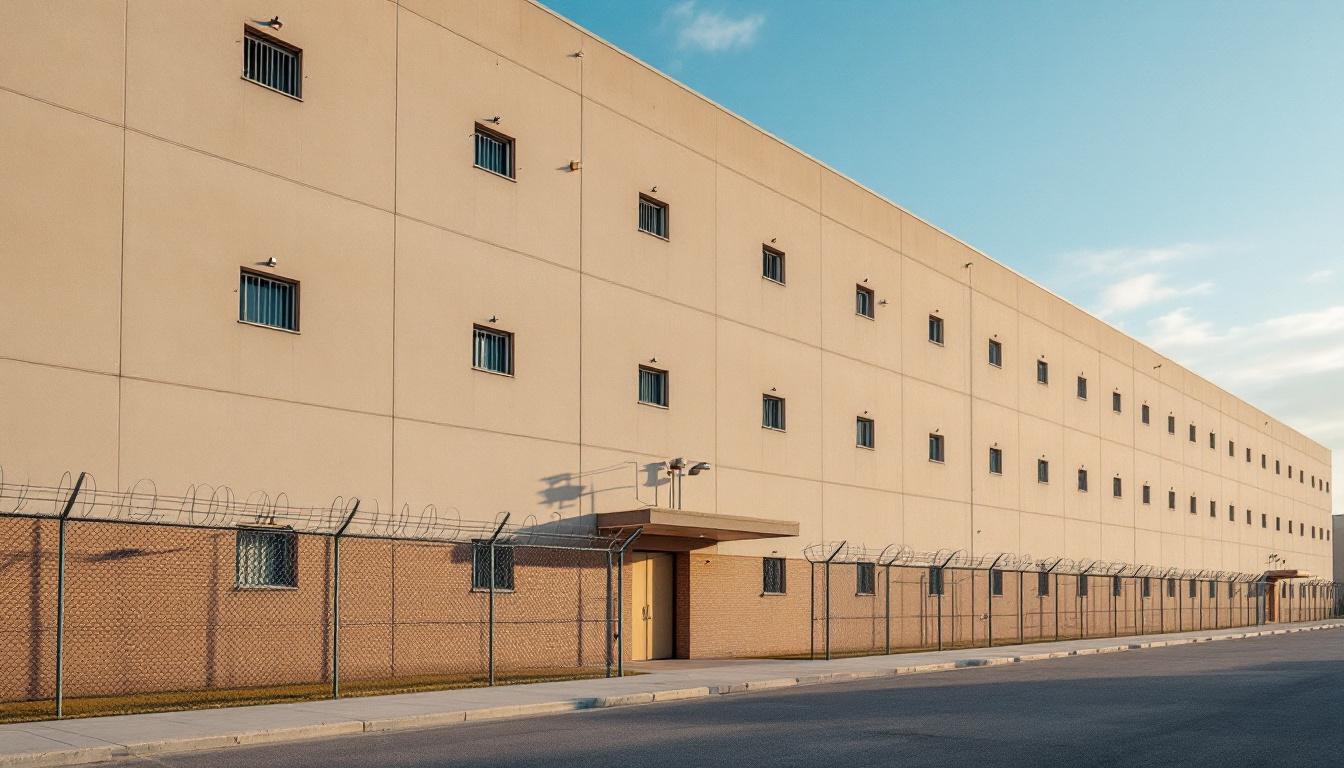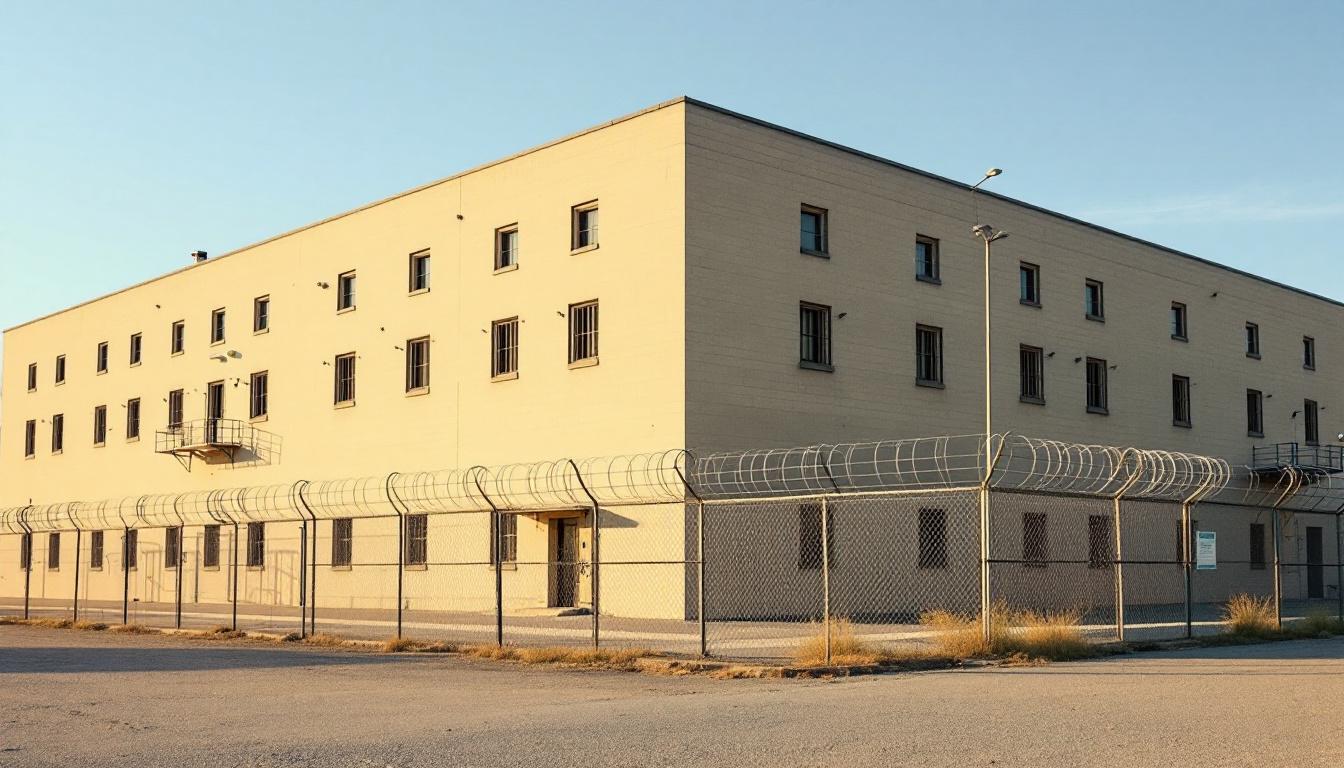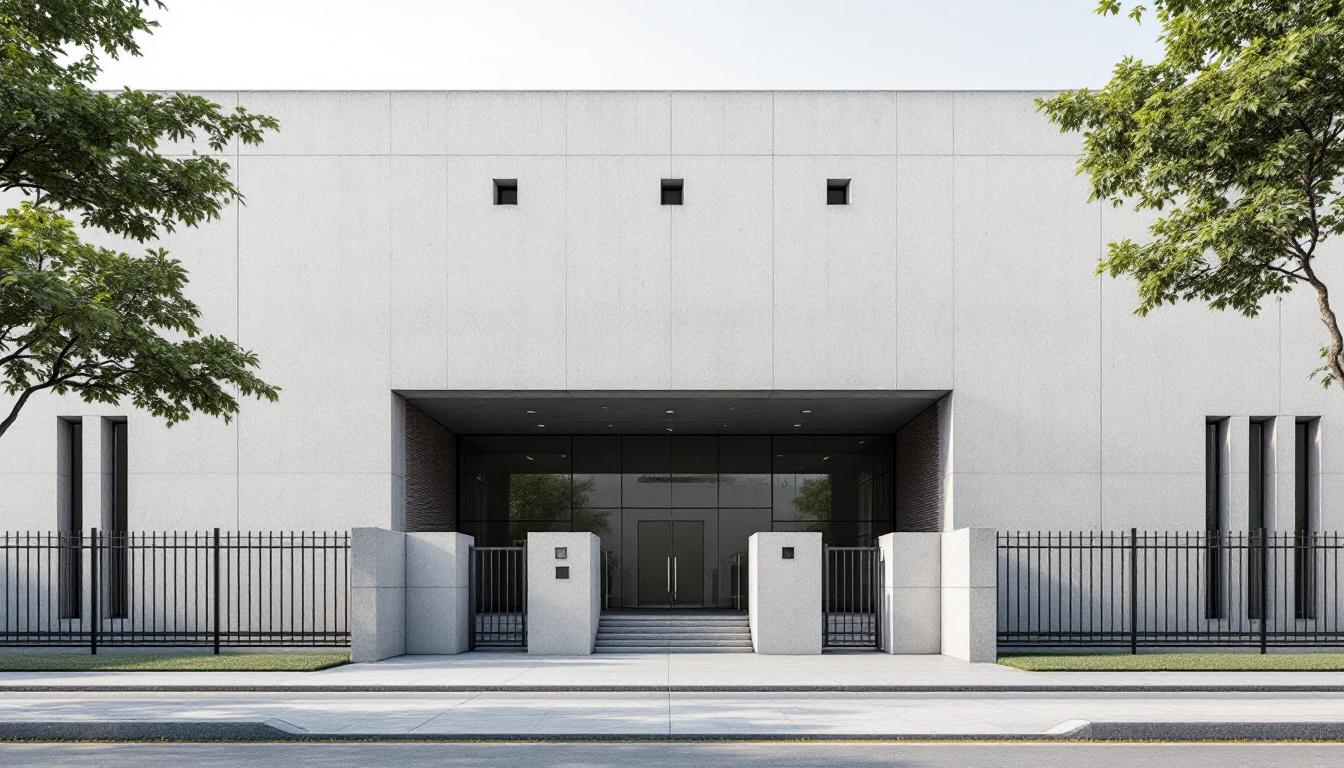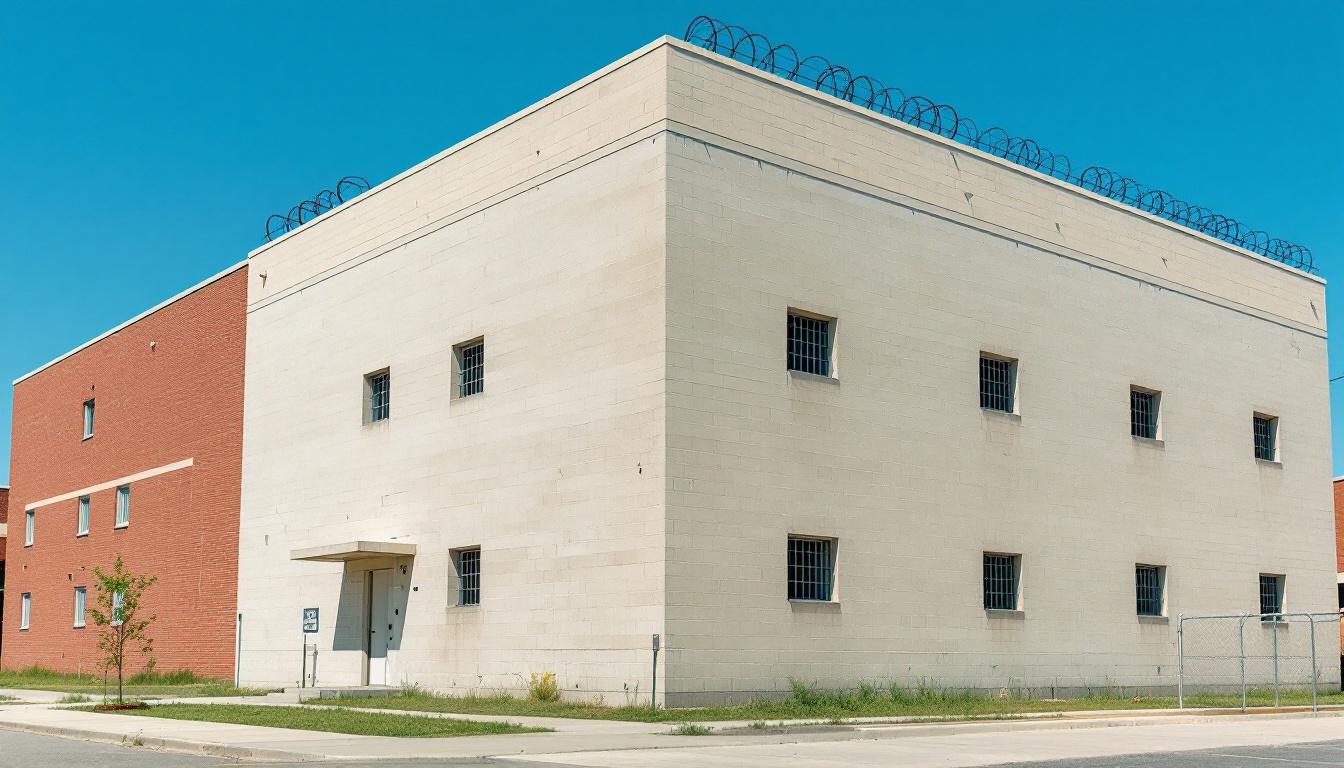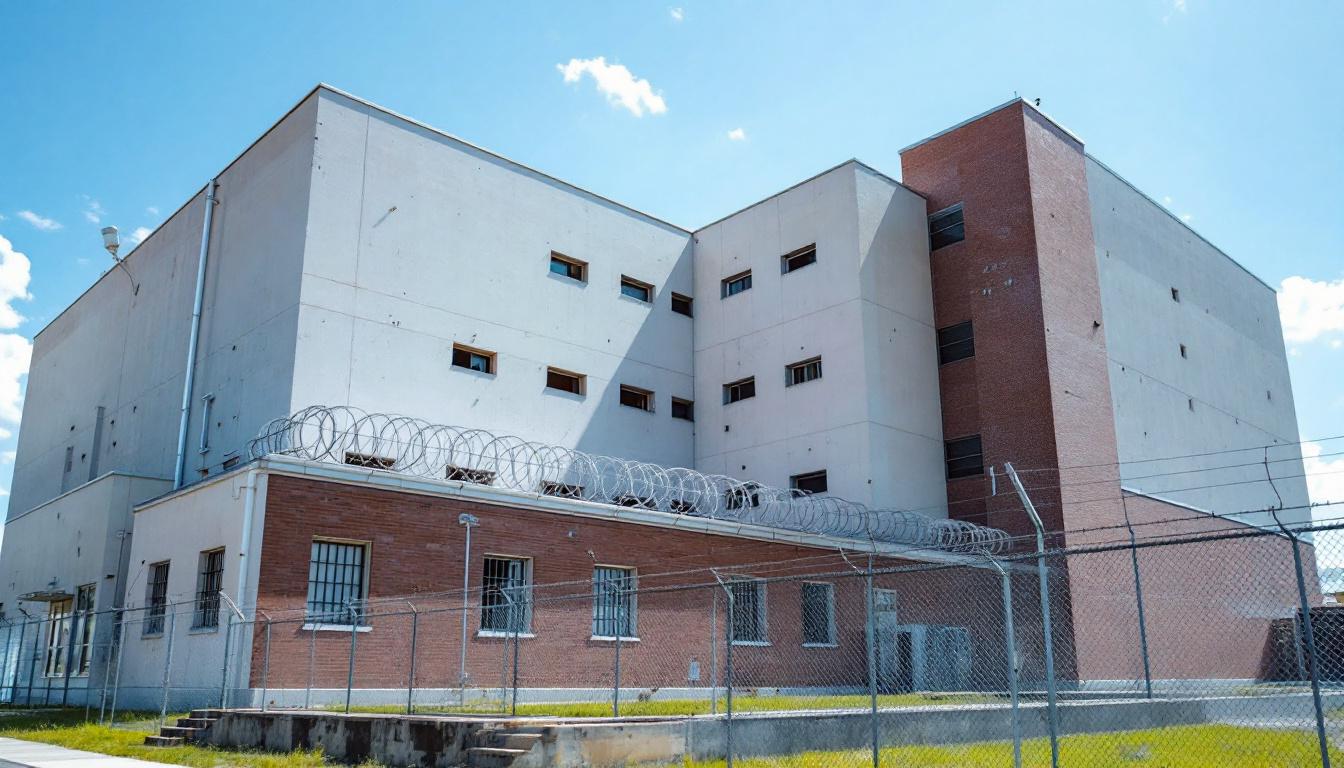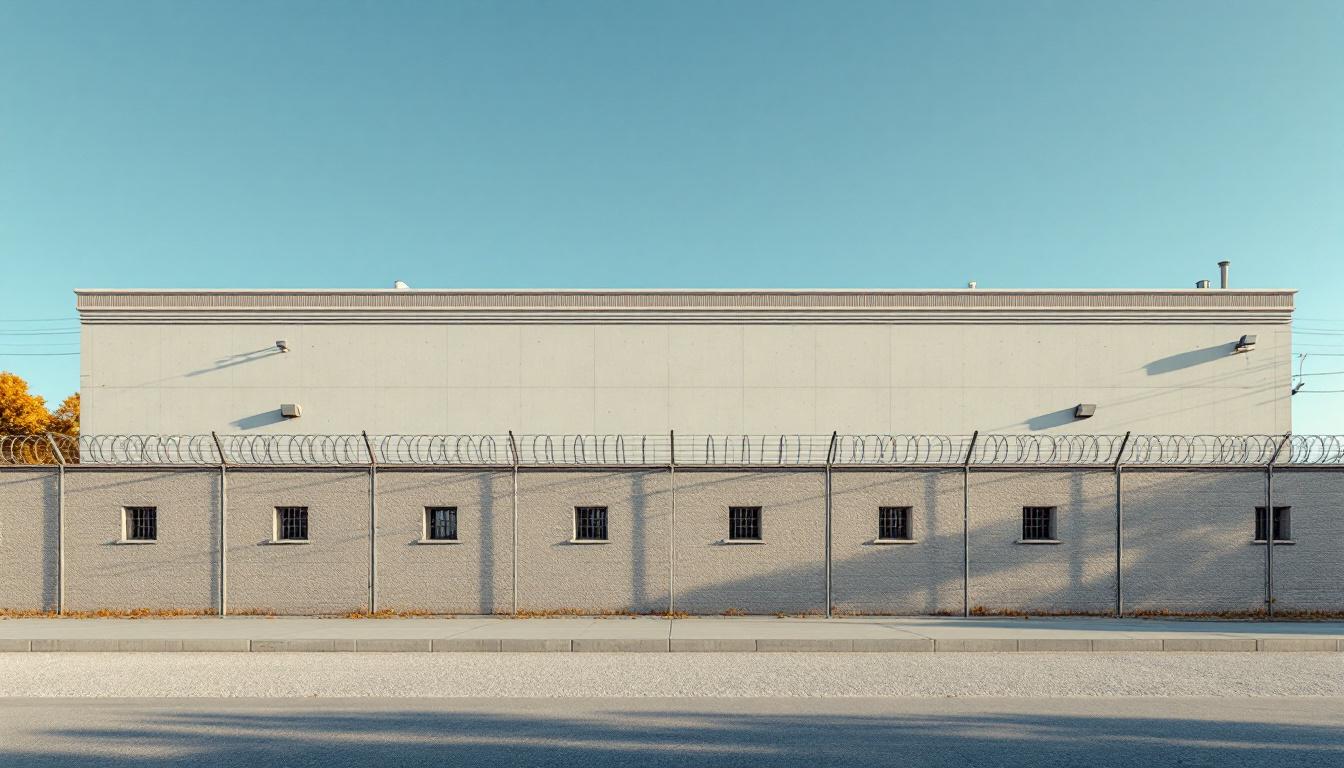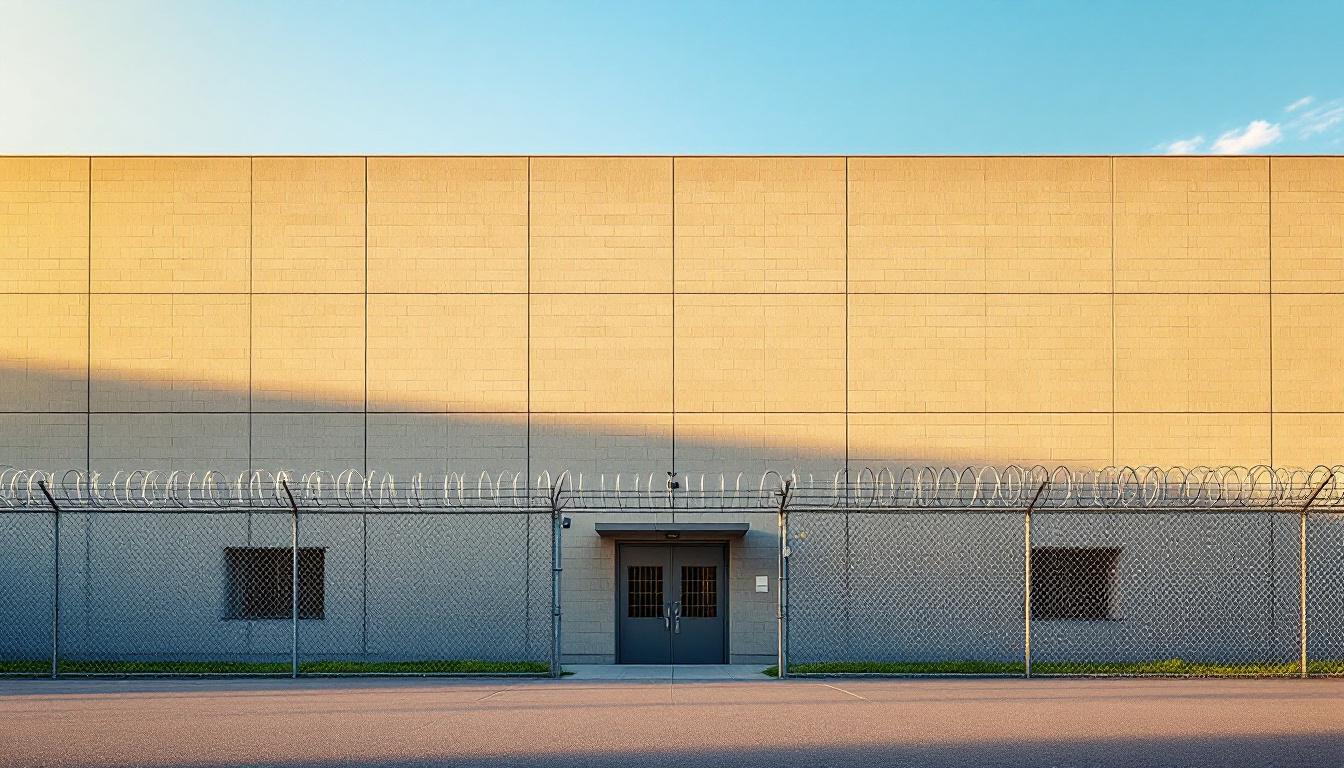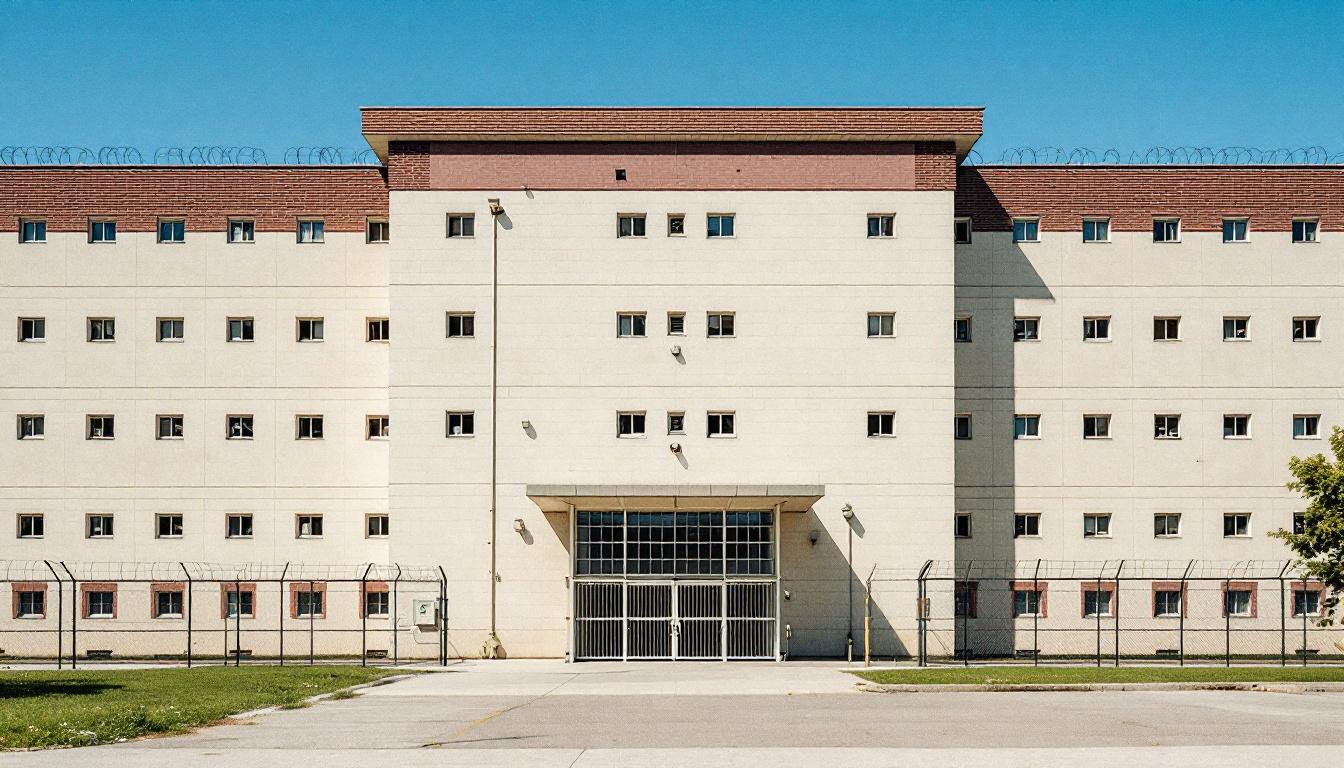
Quick Navigation
How to contact an inmate at Pinckneyville Correctional Center
This comprehensive guide will walk you through how to connect with an inmate at Pinckneyville Correctional Center. Follow the steps below to find an inmate and send letters and photos:
- Search for the inmate using our search tool below
- Create your account or log in to Penmate
- Write your message (up to 6,000 characters)
- Send instantly - inmates receive printed copies daily
Find an Inmate
Search for an inmate to start communicating today
Tip: You can search by first name, last name, or inmate ID number
To contact a person at Pinckneyville Correctional Center start by searching for the person on the facility website. Perform a search by following these steps:
- Step 1: Enter their first name and last name into the search form and click "Search"
- Step 2: Locate their inmate record
- Step 3: Write down their Inmate ID and any housing information provided
Important! Be sure to enter the person's full name. Nicknames should not be used.
How to Send Messages to Inmates

You can use your phone or computer to send emails, letters, and photos to an inmate. Messages are sent electronically to inmate tablets or kiosks at the facility. If you would like to send a message, start by searching for an inmate at Pinckneyville Correctional Center.
Sending Photos and Postcards

A great way to send love and support to a loved one at Pinckneyville Correctional Center is to send photos and postcards. It only takes a few minutes to send photos from your phone and it makes a huge difference. You can also mail postcards with words of support and inspiration, or design your own postcard for special moments like birthdays and holidays.
Important! Be sure not to send any explicit photos or they may not be approved by the facility. You can also use a photo printing app like Penmate to make sure your photos are printed at the correct size (4x6 or 3x5) and are mailed according to the rules and regulations of Pinckneyville Correctional Center.
Frequently asked questions about Pinckneyville Correctional Center
-
How long does it take to deliver a message?
If you're sending an email message your letter is usually delivered within 24-48 hours. For messages sent via mail you should expect delivery within 3-7 days. All messages will need be approved by Pinckneyville Correctional Center.
-
How much does it cost to send a message to Pinckneyville Correctional Center?
You can send a message free using your phone or mail a message via USPS for the price of a $0.60 stamp and envelope. You can also purchase credits or e-stamps from services starting at $1.99.
-
What services can I use to contact an inmate at Pinckneyville Correctional Center?
Penmate
You can use Penmate to send letters and photos to an inmate from your phone. It's an easy way to stay in touch during your loved one's incarceration. Use the inmate locator to find an inmate's location and contact information, then you can send messages within a few minutes.
Securus messaging
Securus may be another option for communicating with an inmate at Pinckneyville Correctional Center. You can create a friends and family account and purchase credits to send messages. All messages will be reviewed and must be approved by the facility.
JPay
Some county jails and state prisons may support sending messages with JPay. You must register an account with the system, find your loved one, and purchase stamps to send messages. For some locations you can also attach photos.
Smart Jail Mail
You may also check if Smart Jail Mail is available at Pinckneyville Correctional Center. Smart Jail Mail is operated by Smart Communications and has contracted with some state and county jails. After purchasing credits, your messages and photos are sent to the facility, printed out, and then handed out to your loved one.
-
What is the mailing address of Pinckneyville Correctional Center?
Mailing address:
Pinckneyville Correctional Center
5835 IL-154
Pinckneyville, IL 62274
Phone: (618) 357-9722Business hours:
- Monday: 8:30 AM – 5:30 PM
- Tuesday: 8:30 AM – 5:30 PM
- Wednesday: 8:30 AM – 5:30 PM
- Thursday: 8:30 AM – 5:30 PM
- Friday: 8:30 AM – 5:30 PM
- Saturday: 8:30 AM – 5:30 PM
- Sunday: 8:30 AM – 5:30 PM
-
What are the visiting hours at Pinckneyville Correctional Center?
Visiting hours at Pinckneyville Correctional Center vary by housing unit and security level. Generally, visits are scheduled on weekends and holidays, with some facilities offering weekday visits. Contact the facility directly at (618) 357-9722 or check their website for the current visiting schedule. Visits typically last 30-60 minutes and must be scheduled in advance.
-
What items are prohibited when sending mail to Pinckneyville Correctional Center?
Prohibited items typically include: cash, personal checks, stamps, stickers, glitter, glue, tape, staples, paperclips, polaroid photos, musical or blank greeting cards, hardcover books, magazines with staples, and any items containing metal or electronics. Only send letters on plain white paper with blue or black ink. Photos must be printed on regular photo paper (no Polaroids). Always check with Pinckneyville Correctional Center for their specific mail policies.
-
How do I send money to an inmate at Pinckneyville Correctional Center?
You can send money to an inmate at Pinckneyville Correctional Center through several methods: 1) Online using JPay, Access Corrections, or the facility's approved vendor, 2) Money orders mailed directly to the facility with the inmate's name and ID number, 3) Kiosks located in the facility lobby, or 4) Over the phone using a credit or debit card. Fees vary by method, typically ranging from $2.95 to $11.95 per transaction.
-
Can I schedule a video visit with an inmate at Pinckneyville Correctional Center?
Many facilities now offer video visitation as an alternative to in-person visits. At Pinckneyville Correctional Center, video visits may be available through services like Penmate, Securus Video Connect, GTL, or ICSolutions. Video visits typically cost $10-20 for 20-30 minutes and must be scheduled in advance. You'll need a computer or smartphone with a camera and reliable internet connection. Contact the facility for their specific video visitation policies and approved vendors.
-
What identification do I need to visit an inmate at Pinckneyville Correctional Center?
All visitors must present valid government-issued photo identification such as a driver's license, state ID, passport, or military ID. Minors must be accompanied by a parent or legal guardian who can provide the minor's birth certificate. Some facilities require visitors to be on the inmate's approved visitation list, which may require a background check. Contact Pinckneyville Correctional Center for specific ID requirements and visitor approval procedures.
-
How can I find out an inmate's release date?
To find an inmate's release date at Pinckneyville Correctional Center, you can: 1) Use the online inmate search tool if available, 2) Call the facility's records department, 3) Contact the inmate's case manager or counselor, or 4) Have the inmate provide this information during a call or visit. For privacy reasons, some facilities only release this information to immediate family members.
Facility Overview
Contact Information
Pinckneyville Correctional Center5835 IL-154
Pinckneyville, IL 62274
Phone: (618) 357-9722
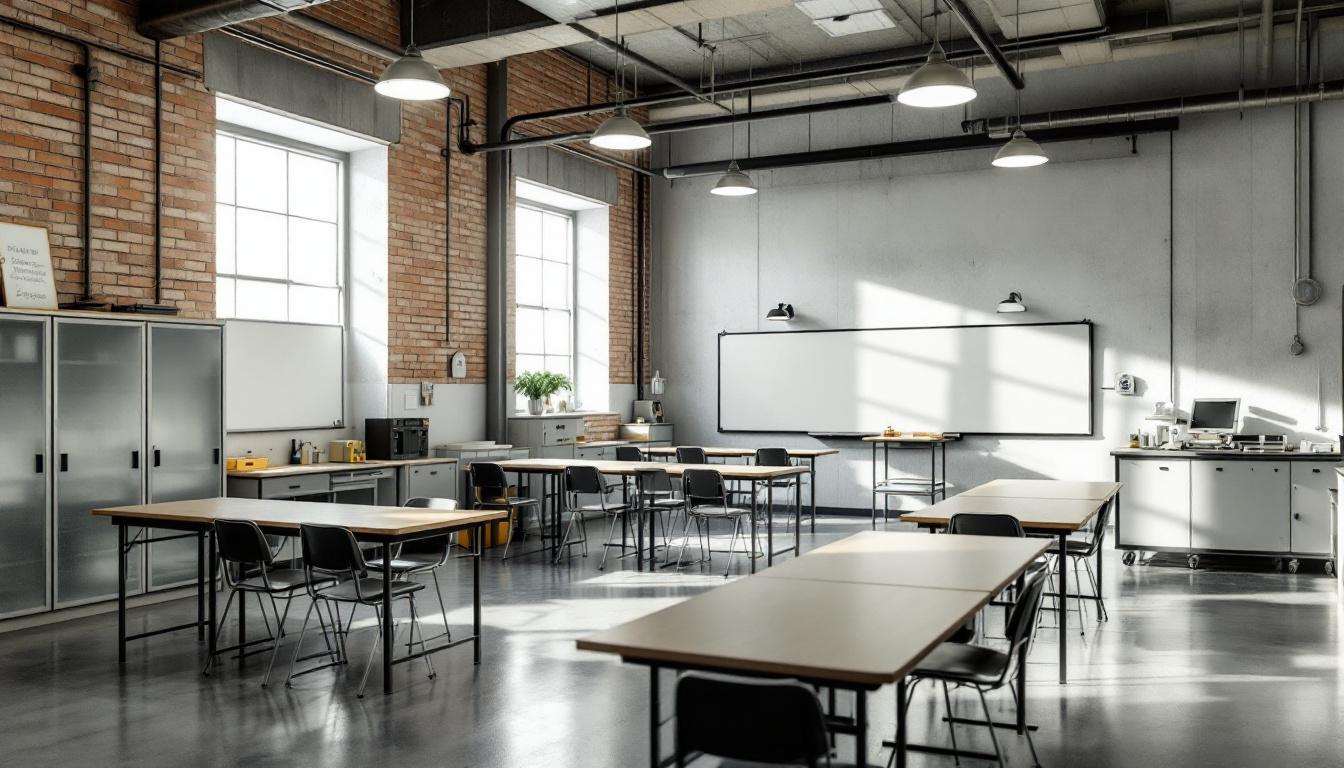
About Pinckneyville Correctional Center
Correctional facilities across the Midwest typically serve as bridges between accountability and community reintegration, and this philosophy shapes operations throughout Illinois's correctional system. Within the rural landscape of Pinckneyville, the Pinckneyvelle Correctional Center functions as an IL correctional facility that emphasizes collaborative approaches to rehabilitation and community connection. The facility generally operates with a focus on preparing individuals for successful reentry into their home communities, recognizing that effective corrections work requires partnerships that extend beyond institutional walls.
The population services at this correctional facility often reflect the broader needs of Southern Illinois communities, with programming that may include educational opportunities, vocational training, and behavioral health support. Staff typically work to connect individuals with resources that can support long-term stability, understanding that rehabilitation succeeds when it addresses the whole person within their community context. The facility's location in Pinckneyville allows for potential connections with regional employers, educational institutions, and social service organizations that can provide continuity of care and support during the transition process.
Community-centered approaches to corrections recognize that families and neighborhoods play crucial roles in successful reintegration outcomes. The facility generally maintains visiting programs and communication systems that help preserve family connections, while also working to address the underlying factors that may have contributed to involvement in the justice system. Through collaboration with local and state resources, the center typically aims to provide individuals with the tools and connections necessary for rebuilding their lives as contributing community members.
Programs & Services
Through a comprehensive framework of therapeutic interventions and skill-building initiatives, support is delivered to the population at Pinckneyville Correctional Center through carefully structured programs designed to address both immediate needs and long-term reintegration goals. The facility's approach emphasizes holistic development, recognizing that successful rehabilitation requires addressing multiple dimensions of an individual's circumstances. This multifaceted strategy typically encompasses educational advancement, vocational training, and therapeutic support services that work synergistically to promote positive behavioral changes and prepare participants for meaningful community engagement upon release.
Educational services form a cornerstone of the facility's programming structure, often including literacy development, high school equivalency preparation, and post-secondary educational opportunities that enable the population to advance their academic credentials. In addition to this academic foundation, vocational programs provide hands-on training in practical skills such as automotive repair, which may supply participants with marketable competencies essential for securing employment in their communities. These skill-building initiatives typically emphasize both technical proficiency and workplace readiness, incorporating elements of professional development that extend beyond mere job training to encompass communication skills, work ethic, and collaborative problem-solving abilities.
The therapeutic dimension of programming addresses the complex psychological and emotional challenges that many individuals face, with mental health treatment services providing clinical support for various conditions and circumstances. Group therapy sessions typically facilitate peer interaction and shared learning experiences, while dual diagnosis treatment may address the intersection of mental health and substance abuse issues that frequently contribute to criminal behavior. Intramural sports programs complement these therapeutic interventions by promoting physical wellness, teamwork, and constructive social interaction, creating opportunities for the population to develop healthy coping mechanisms and build supportive relationships that can continue to benefit them throughout their reintegration process.
Daily Life & Visitation

The carefully orchestrated framework of institutional protocols currently shapes every aspect of the residential experience, where systematized routines and established procedures continue to provide predictability for the population throughout their time at the facility. Daily schedules typically begin with early morning counts and meal service, followed by structured work assignments, educational programming, or other approved activities that supply meaningful engagement. The population generally moves through predetermined pathways between housing areas, dining facilities, and program locations according to established security protocols and scheduling requirements.
In addition to this structured daily flow, living accommodations typically consist of multi-person cells or dormitory-style housing units where residents store their approved personal belongings and maintain their assigned living spaces. The population usually receives three meals daily in designated dining areas, with menu rotations that often include basic nutritional requirements and may accommodate certain dietary restrictions. Recreation opportunities generally supply physical activity through gymnasium access, outdoor recreation yards, and organized sports activities when weather and security conditions permit.
Despite this highly regulated environment, the facility typically maintains communication systems that allow the population to connect with family members and approved contacts through scheduled telephone access and regular visitation periods. Work assignments often include facility maintenance duties, kitchen operations, laundry services, and other institutional support functions that provide structure while teaching practical skills. Educational programming and counseling services may offer additional structured activities designed to support rehabilitation goals, though availability often depends on staffing levels and institutional priorities that continue to evolve based on operational needs.
Ready to Connect?
Start communicating with your loved one today
Search for an Inmate
